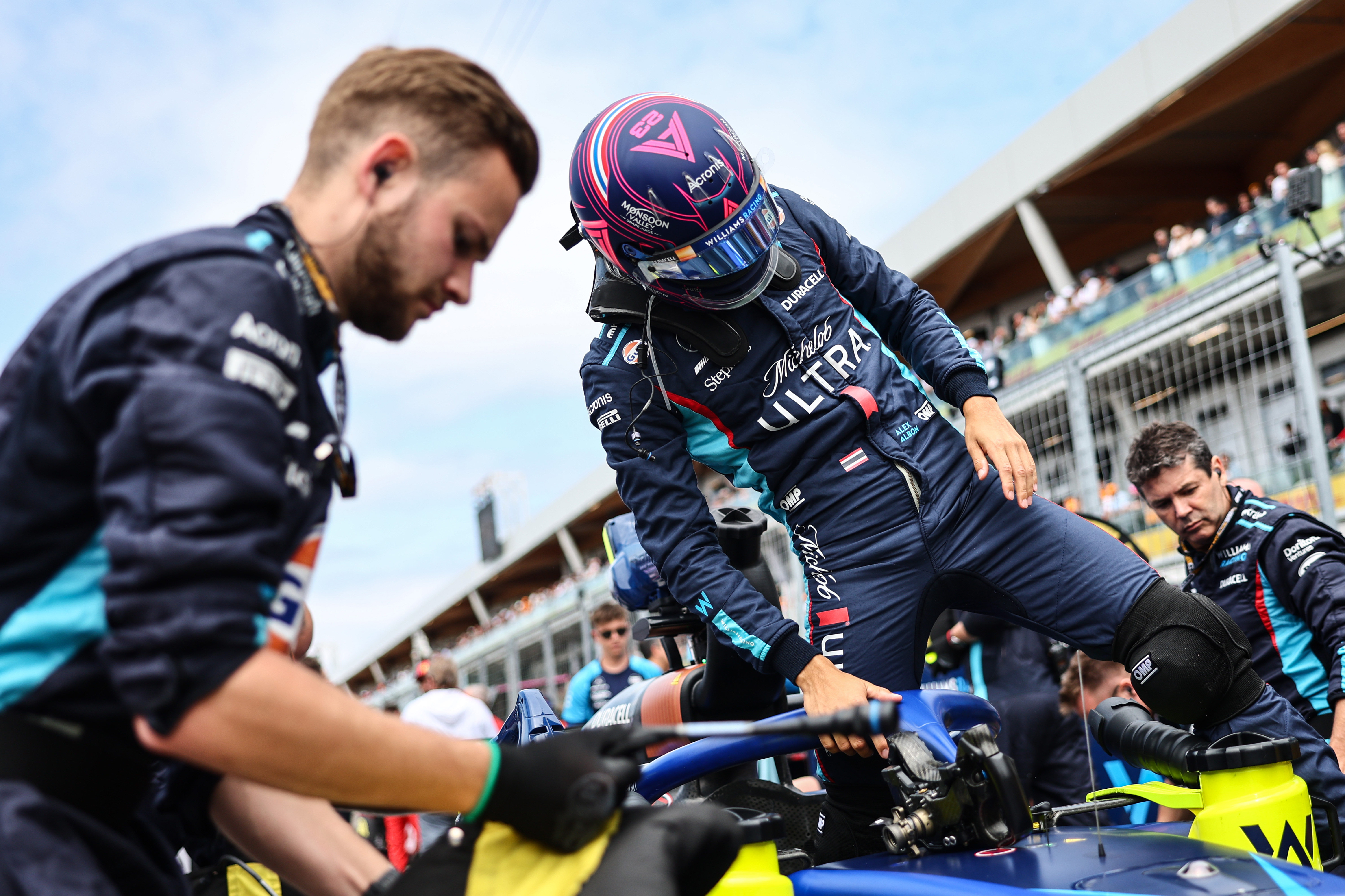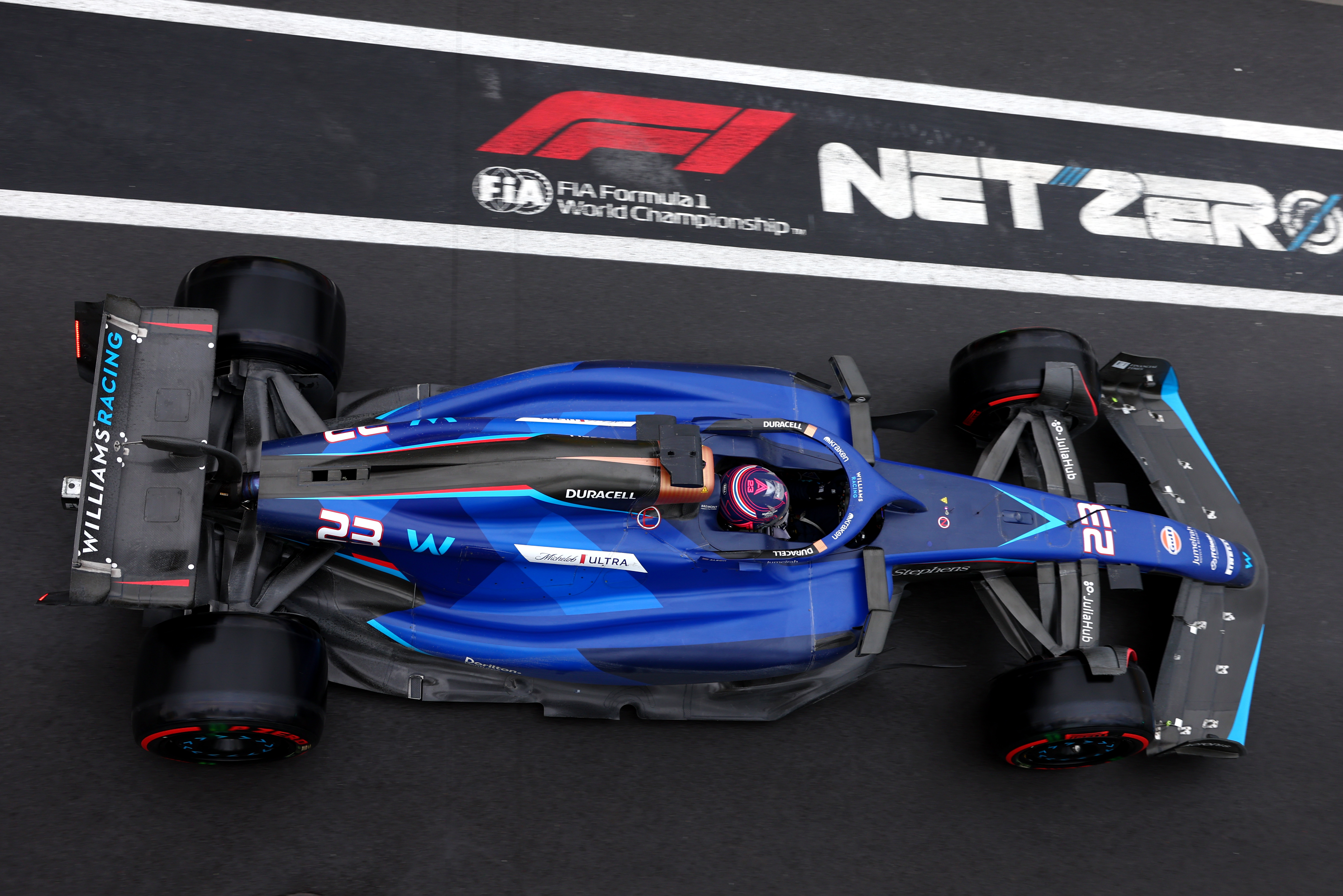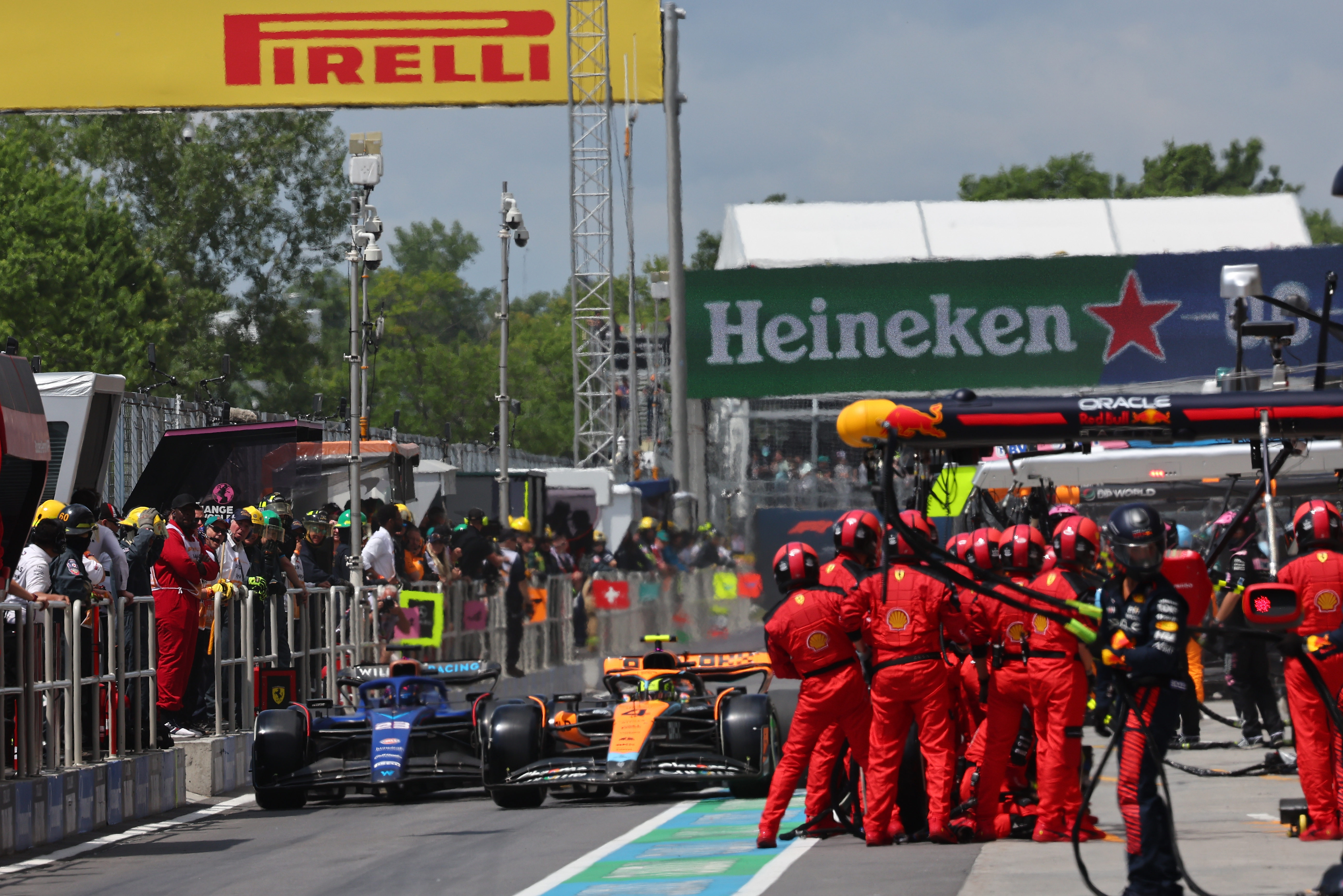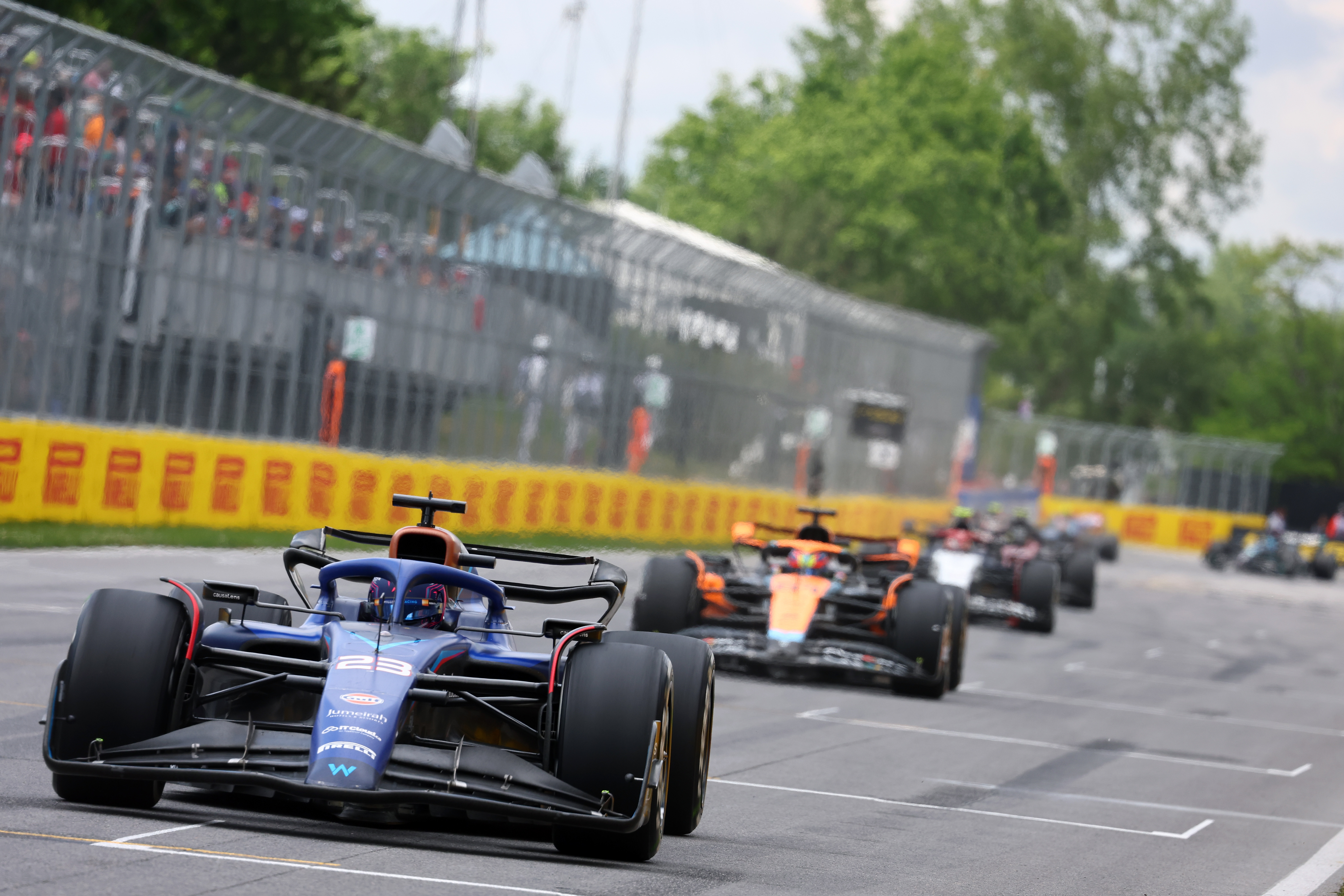Up Next

Alex Albon’s route to seventh place in the Canadian Grand Prix seemed straightforward enough: take advantage of the safety car to make a cheap pitstop, stay out when others make a second tyre change so you gain positions, then run to the end and hold position thanks to having a car that’s fastest in the speed traps.
The reality is more complicated for a driver who has proved particularly adept at executing such race drives since joining the Williams Formula 1 team.
Albon has become well-known for such drives since joining Williams. He took 10th by running a marathon stint on hard rubber before a pitstop at the start of the final lap in Australia last year, and mounted a superb rearguard at Spa in 2022 for 10th place in the Belgian Grand Prix. That drive was the one that sprung to mind while watching his Canada performance.
That said, it’s not something Albon is unfamiliar with. He likened such midfield heroics to controlling races from the front earlier in his career.
“I’ve always, even in Formula 3 and Formula 2 days, enjoyed leading a pack and controlling it,” said Albon, when asked by The Race about his aptitude for this kind of race drive. “I’m not technically leading the race, but I’m leading what at that point you could call the midfield race and it’s just doing enough to keep them behind and making sure you’ve still got enough in the tank for the rest of the race. That’s something that’s quite tricky to gauge.
“I wouldn’t have been able to do it without a good car. Honestly speaking, this weekend we’ve had a great car, I can’t thank the team enough. I’ve been at the factory the last two weeks, in terms of simulator work but also with [team principal] James [Vowles] and I can’t tell you how much of a part deficit we were at after Barcelona. We were on the edge and we decided to fast-track the upgrade into Canada because it’s going to be our only chance until possibly one of these Monza races come up.

“The guys worked absolutely flat out to get it ready. It’s great to be able to put it on the car, put a new PU unit even, put everything into this weekend. It was actually a bit of pressure in some respects coming into this weekend to deliver and we did so I’m very happy.”
It’s also just reward for a driver who has been a midfield star this season, albeit without much in the way of results to show for it.
This seventh place also reflects well on a Williams team that, while still struggling, has made some solid progress this year and is closer to the front than it was in 2022.
“In some ways, yes exactly that – go under the radar as a lot of our good races get completely unseen by everyone,” said Albon when The Race put it to him that it was important to get a tangible result after previous strong performances had gone unrewarded.
“We got our TV time – at least when I saw the screens it was us!
“It just shows the progress we’re making. Everyone talks about the Astons, how much they’ve made a step forwards, but we were still far more competitive than we were last year.
“That’s really positive for the team and we’re on our way, on our journey. We’ve still got a couple of years ahead of us, but it’s great to be able to do these kind of results.”
How the Montreal result was achieved

The journey to the best result of Albon’s Williams career started on Friday when the team first ran its major upgrade package on track. Only Albon benefitted from it given the team didn’t have enough parts to run on both cars (although he did have a set of spares available), but he was positive about progress despite the disrupted day.
Having driven the car in the simulator before the weekend, he was delighted it produced no “nasty surprises” once unleashed outside of the digital domain.
Albon didn’t show startling single-lap pace in practice in dry or wet conditions, but he was immediately in the mix in qualifying. Sixth fastest in Q1 on intermediates, he then judged the conditions perfectly in Q2 and was the only driver to head out at the start of the session on slicks. That allowed him to set the fastest time thanks to having the tyre temperature he needed and being on track in the best of the conditions.
While it seemed a justifiable gamble for Williams, Albon saw it as the logical choice given the conditions. This was no hit and hope, although he did have visions of repeating old friend George Russell’s error of last year, when the Mercedes driver went out for the final run in Q3 on slicks and crashed.
“We didn’t need to take the risk in Q2, but we just felt like it was the right thing to do,” said Albon. “We made the call and I was surprised seeing everyone roll out on the inters, which made me doubt it a little bit.
“I had in the back of my head George from last year. On my first push [lap] I was particularly slow through Turn 1 and Turn 2 just to make sure I avoided crashing [as Russell did in 2022]. It was great to get through, and obviously just a bit of fun to be in P1.”
Q3 didn’t go so well. The conditions worsened so Albon went out on intermediates, but struggled with the loss of tyre temperature on the long back straight. That led to him cutting the final chicane on the one opportunity he had to set a time before the red flag, with conditions much worse after the restart. His verdict on the session was that he was “disappointed”, although the Williams garage was delighted by the boost of topping Q2.

Carlos Sainz’s three-place grid penalty promoted Albon to ninth on the grid, but he was shuffled back to 10th at the start by Charles Leclerc’s Ferrari. He stayed there during the first stint, stuck in a DRS train between the two Ferraris and struggling a little at times for front grip.
Team-mate Logan Sargeant’s MGU-K problem briefly brought out the VSC, with Albon getting a run on Leclerc at the restart that he couldn’t convert into a move. Then, Russell crashed and the safety car was deployed, with Albon one of eight drivers to dive into the pits – followed by the recovering Mercedes driver.

Despite Lando Norris backing him up a little at the end of the lap, then McLaren flirting with an unsafe release in front of Albon, he re-emerged in 12th place. Several potential rivals had been disadvantaged by stopping just before the safety car, most relevantly Haas driver Nico Hulkenberg, Alpine’s Pierre Gasly and Aston Martin’s Lance Stroll – so that meant three potential points challengers were decisively behind him.
Albon was chasing the McLarens of Oscar Piastri and Norris, and ahead of Yuki Tsunoda’s AlphaTauri. The position was promising given five cars ahead – the Ferraris, Sergio Perez, Kevin Magnussen and Valtteri Bottas, had yet to stop.
What followed was the busiest phase of the race for Albon. Norris dived inside Piastri at the hairpin on lap 17, the first after the restart, then soon got ahead of Magnussen. Albon’s first attempt to pass Magnussen led to a brief lockup and straightlining the final chicane, which allowed Piastri – who Albon had originally passed when the McLaren made the same error at the final chicane – to get back past.
Albon eventually dispatched Magnussen on the run to the first corner on lap 28, putting him back up to 11th. He quickly closed the gap to Piastri again, but it wasn’t until the second pitstops kicked in that he picked up more places. Norris, Bottas, Ocon and Piastri all stopped ahead, allowing Albon to climb to seventh. He was briefly up to sixth – while the Ferraris had built a big enough gap to stay ahead when they pitted, Perez had not – but was quickly relegated back to seventh by the second Red Bull.
This set the stage for the final phase of the race, the small matter of completing a 58-lap stint on hard rubber while keeping the cars behind at bay. Initially, he had Russell’s hobbled Mercedes on his case. Russell had effectively matched Albon’s strategy and gained when others stopped, but eventually retired with a front-left brake problem. This put Ocon on Albon’s case, but he was also unable to mount a successful attack.

While it might have appeared Albon was simply driving around, using the straightline speed to his advantage to stay in position, this was a particularly demanding position to be in. He had to be precise, avoid errors and ensure he always got a good launch off the Turn 10 hairpin for the long run to the final chicane to cover off a car behind that was often in DRS range.
“We have a straightline [speed-focused] car and you have a big tyre [life] deficit, but at the same time you [are] saving the tyres to make the key corners count,” said Albon. “In Turn 10, I was making sure I positioned the car for Esteban’s dirty air to try to still make him hurt his tyres and traction and all that kind of thing.
“So you’re driving a race that’s very much in your rear view mirrors even though you’re obviously trying to not make mistakes.
“The other thing is when the tread comes down, the tyres start to cool down quite a lot, you have to start pushing and by the end of the race the carcass is almost [visible], you can see white parts where you’re right down to the canvas.
“You have to push flat-out, it feels like qualifying for the last 20 laps; at the same time you can’t afford to make a mistake. A real balance going on but that’s what we’re paid for.”
This was a race where Albon effectively had to thread the needle. The car’s pace was respectable, but he needed to keep quicker cars at bay and he did that to great effect. Late on, he got a little respite as Ocon, complete with alarmingly wobbling rear wing, became more focused on keeping Norris behind.
By Albon’s reckoning, the speed of the McLarens was roughly equivalent to his Williams, but seventh place was only possible by executing a difficult race well.
“We had similar pace to the McLarens the whole weekend,” said Albon. “Realistically, where we were, we had to do something different to them as they were in front to get the points.
“We had very good pace this weekend, but still to get points is difficult. We’ve got eight cars, the Red Bulls, Astons, Ferraris, Mercedes, and the final two positions are normally the Alpines now. So we had to stick to the one-stop.
“The guys told me I had 35, 40 laps to go. I think they even told me 20 to make me feel better! And I looked at the TV screen and thought, ‘Oh my God I hope that’s not real’, but I’ve done these races a lot now. I can tell you they’re not that fun.”

The race may not have been enjoyable, but the shout Albon unleashed over the radio as he took the chequered flag showed he was thrilled with the result. It was his first points finish since taking 10th in the Bahrain season opener in what has been a strong season, blighted only by crashing out of sixth place early in the Australian Grand Prix.








